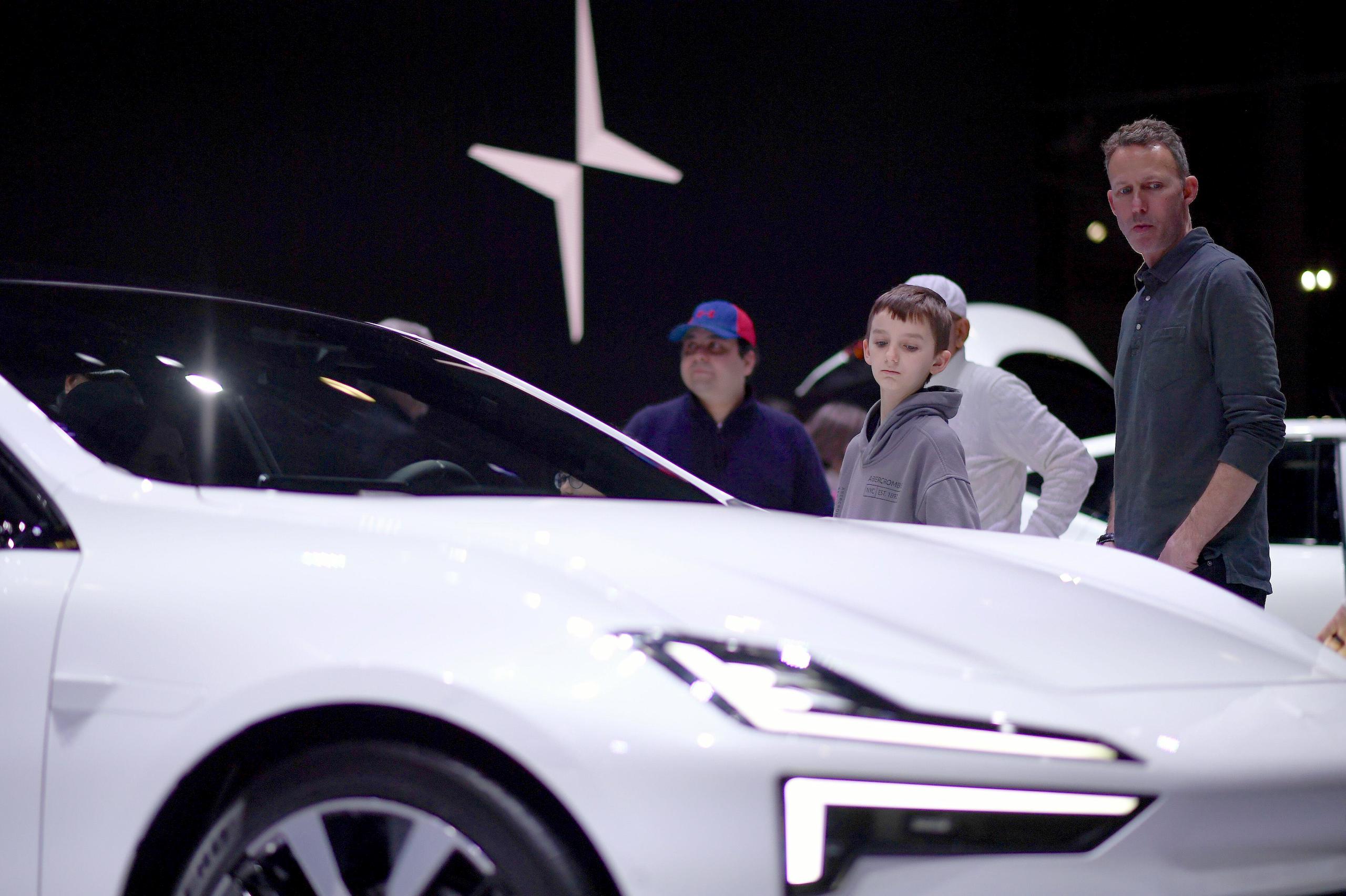On 14 May, the US government announced huge increases in tariff rates on a range of Chinese exports, most of which are forms of “green” or low-carbon technologies. The measures, which will come into effect from 1 August, include a 100% tariff on the value of electric vehicles, 25% on lithium-ion batteries and 50% on solar cells. This means importers of Chinese goods from the affected categories, which also include medical products, steel and aluminium, and ship cranes, will have to pay the specified percentages to the US government as tax.
The tariffs will make these products uncompetitive, effectively blocking their access to the US market.
Besides representing a new area of tension between the US and China, the tariff hikes have implications for global energy transitions, climate diplomacy, Latin American manufacturing and trade relations, and the very nature of technological progress in the 21st century.
Dialogue Earth spoke to experts from Europe, China and Latin America on their assessment of these issues and more.
Belinda Schäpe
Independent expert and advisor on Chinese climate policy and EU–China relations
The recent US tariffs on green technologies mark the next stage in a trade war with China that could slow down an already delayed energy transition in the US. A race to the top in production would be welcome, but current US policies might not have the anticipated effect. Green technologies in the US will likely become more expensive due to the new tariffs, despite the large subsidies of the Inflation Reduction Act, hampering global efforts to tackle climate change.
The EU should not compromise on its climate targets; instead, it should find its own way of handling China’s dominance in green technologies.
The EU needs to carefully balance its objectives of achieving resilient supply chains and climate resilience. Hastily cutting China out of green technology supply chains could jeopardise the EU’s climate objectives. This requires a pragmatic look at the threat from Chinese green technologies: while dependence on China for some goods may create economic and strategic risks, it may not for others. To ensure a smooth energy transition, some reliance on China may be unavoidable in the short- and medium-term, given its dominance in international supply chains. Diversifying these supply chains will require global partnerships, particularly with countries in the Global South, backed by financial firepower and innovation, rather than new tariffs.
With tensions between the US and China escalating, EU–China relations play a pivotal role in maintaining continuity in climate efforts and diplomatic dialogue. A looming tit-for-tat between China and the US on green technologies risks undermining global climate cooperation. Under a second Trump administration, the US might abandon its climate commitments – and with that, one of its few active working groups with China. If US–China climate engagement falls apart, the onus will fall on the EU to work more closely with China towards advancing global climate efforts and to hold China accountable for its climate commitments. The EU should stand ready to maintain its climate leadership position, while carefully navigating trade tensions.
Yao Zhe
Global policy advisor for Greenpeace East Asia
With elections approaching, President Biden’s decision to escalate the trade disputes on Chinese green products is a risky bet. Going tough on China may win over some voters as an immediate political gain, but he could lose China’s trust for climate cooperation. China is expected to take countermeasures in response to the new tariffs, but US–China climate dialogues are set to continue. However, if green trade disputes continue to intensify, it could prevent any substantial coordinated climate effort from the two countries.
US–China climate engagement is now headed by new leads. John Podesta, now America’s top climate diplomat, is also in charge of the implementation of the Inflation Reduction Act. His dual hats will inevitably draw trade and climate talks closer together, and that will be a tough test for the resilience of bilateral climate engagement.
Climate was the special bond stabilising relations between the two countries during difficult times. But recent moves in the US, including pressuring China with “overcapacity” claims and hiking tariffs on Chinese EVs and solar cells, are sending conflicting signals.
Competition may well be the baseline of US–China relations for a long time to come. But that doesn’t mean they have to compete on every front. On climate, there are still good reasons to cooperate, even in green industries.
Chinese companies are exploring opportunities to set up joint ventures and manufacturing centres in overseas markets, including the US. This will help create local jobs and economic growth. If Chinese and American businesses have the desire to work together, politics should not get in the way.
David Tyfield
Professor of sustainable transitions and political economy, Lancaster University
The new US tariffs on Chinese electric vehicles (EVs) show that there are increasingly powerful voices in the US who get that there is much more at stake with the EV than a minor upgrade of a long-established technology.
We are only at the beginning of the socio-technical evolution of the EV. They are increasingly “supercomputers on wheels”, in an age where everything is digitalised. As a result, EVs are not only central to the transformation of mobility and geopolitical competition in associated key industries of the 21st century, they are also the key technology that will shape forms of urban life, visions of the (“good”) future, and thus, global order and power.
Given the fundamental mismatch between the global worldviews of the current and rising superpowers, it is little surprise that we are witnessing a dynamic of escalating rivalry and progressive “strategic decoupling” regarding the EV, what it will become and how it, in turn, will shape the future world.
The determined presence of the US in a genuine “global EV race” is welcome – not necessarily for the quantitative pace of EV roll-out, nor because American innovation is somehow “better”, but because it at least secures a platform for meaningful competition regarding the qualitative moulding of future EVs. It also ensures that the trajectories of this crucial technology are not ceded by default to the demands of the Chinese Communist Party.
The protectionism involved, though, is a strategy beset by the risk of being self-defeating. Yet this is now unavoidable. What is clearly not on the table any longer is the “best case”, win-win and lowest-risk strategy: that of US–China collaboration.
So, how this latest move affects the global sustainable mobility transition depends on complicated detail as it develops over the medium-term. As the US and China offer increasingly distinct and directly competing visions of the EV, the rest of the world (whose markets both will need) could play one against the other, yielding a positive global outcome. But the opposite outcome may also arise, as a worsening geopolitical split spills over, slowing EV adoption through cycles of distrust that negatively affect this technology.
In short, the tariffs have announced a new era in which intensified global competition could accelerate or slow EV adoption, but will definitely make it more turbulent.
Jorge Heine
Research professor at the Pardee School of Global Studies and interim director of the Pardee Center for the Study of the Longer-Range Future at Boston University
This should be a wake-up call for all countries in the region, as it may be the opening salvo of a major escalation in the US–China trade war. Candidate Trump has announced that, as president, he would impose a 10% tariff on all goods imported into the United States and a 60% tariff on all Chinese goods.
Since the ’90s, a number of Latin American countries including Chile, Colombia, Peru and Uruguay have bet on free trade and on having access both to the US and Chinese markets (whose economies comprise 40% of the world’s GDP) to increase their exports and grow. This bet has stood them in good stead.
The message coming out of Washington now is that the era of globalisation and open markets is over. Protectionism now rules the roost. For a region endowed with so many of the key commodities for the transition to a green economy, including copper and lithium, the targeting not just of electric cars, but also of batteries and other green renewable energy products like solar panels, is especially worrisome for Latin America.
Leveraging and adding value to these key commodities for the transition to a green economy is, for many Latin American countries, the best option to boost growth, after yet another “lost decade”. Latin American countries are keen to work with both the United States and China to make this happen by triangulating the relationship – much as the region did at the height of the commodities boom.
The message coming out of Washington, however, is that this is a no-go. The US is now strictly prioritising its own internal market, with climate change and the region’s green transition considered mere collateral damage.
Enrique Dussel
Coordinator of the Centre for China–Mexico Studies at Mexico’s National Autonomous University
In the past few years, we have been experiencing a conflict between the US and China. Many are speaking of “near-shoring”, “onshoring” and “offshoring”. I would add “security-shoring” to the conversation, which places US national security above trade and has a direct impact on third countries.
Recently, the expectation in the US is that third countries must use the same regulations against China. It is the “invest, align, compete” strategy that the US has taken against China. The “align” aspect affects third countries, because the US is looking for third partners to join against China; the expectation is that Mexico aligns itself with security-shoring strategy in all areas.
In the electoral field, both Biden and Trump agree on this, and the game will be who is tougher against China.














